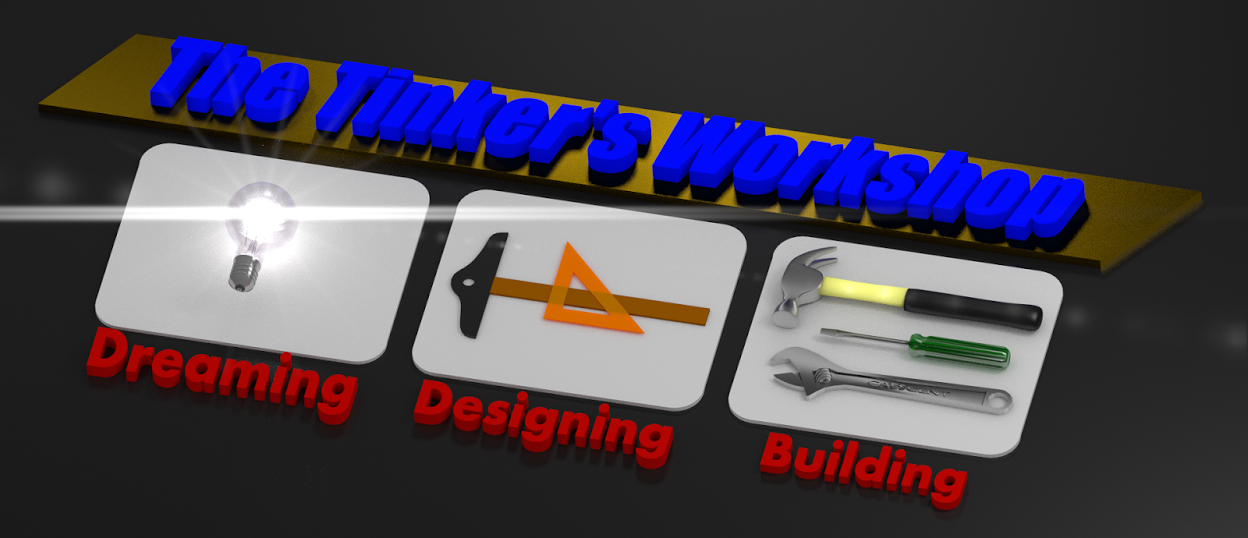For some time now I have been toying with the idea of building a video camera slider. What this piece of equipment is exactly is a small dolly with the video camera mounted to it that rides on a track to move the camera smoothly from side to side, forward or back, or even vertically. This setup has been used in the making of movies for more years than anyone can count. The only problem with this rig is that to go out and buy a professional one just to shoot your home videos cost a big pocket of cash. Prices have come down on the equipment and there are a lot of videos online on how to build one for a lot less. So with this in mind I set out to build my version of a video camera slider that I call the TinkerTrac.
This is what I have in mind. Luckily for me I already have most of the parts to create what you see here. A small dolly that the video camera is mounted to rolls across the track using ordinary skateboard wheels. The track is made up of two " L" shaped aluminum rails. This will give the dolly a nice smooth surface to roll across while the camera is being moved on it.
Just below the dolly is an additional lower carriage (at each axle) that holds four additional roller skate bearings. These bearings roll along the inner walls of the " L" shaped tracks and keep the dolly centered as it is moved from side to side.
Here is a good view of how the carriage and axle assemblies will be put together. At the center of the axle for the wheels is a 5/16" threaded rod connector. This is slide into place after the two vertical parts of the lower carriage is lined up with the lower mating portion of the video camera platform. (The camera platform is not shown here just for clarity.) Once this is done two spacer (shown in yellow) are slide over the ends of the threaded rod connector. Next comes two bearings on the axle, then the wheel (also not shown for clarity) and another two bearings. Finally a Allen headed 5/16" bolt at both ends to hold everything in place.
Here is an image of the video camera platform. The hole in the center of the top surface is for a 1/4" bolt that will hold my video camera to the dolly assembly while it is being used.
Here is the camera dolly fully assembled with the camera platform , wheels and the lower skateboard bearings mounted using additional 5/16" bolts, nuts, and washers. At this point once this assembly is mounted between the aluminum rails the dolly no longer can accidentally be bumped off the track.
At the center of the TinkerTrac is a mount for a tripod. This is designed with a quick release mount that matches my tripod. It can be put on or taken off my tripod in less then three seconds. The decal for the TinkerTrac I also have figured out how to make myself which will add just that little bit of a special touch to this project. I'll post how I make this decal at another time so I can show you how easy it will be to make your own decals for your own projects.
Here is a shot of what the tripod mount looks like for the camera slider. It along with several other pieces for this project will be 3D printed to get everything working as it should. This part for the TinkerTrac will need to be mounted with the heads of the bolts in the four upper locations on the inside of the aluminum rails to allow clearance for the dolly as it is being moved down the track. The nuts that hold these bolts in place will be on the outside of the assembly embedded in the six sided pockets so that the nuts will not spin as they are being tightened during assembly.
The entire assembly will be 34" long, 5" tall (at the camera platform) and 6-3/4" deep. I did some research as I usually do with my projects and this is considered to be a standard or mid-sized camera slider. I have found some to be closer to four feet in length or longer. A lot bigger and costlier than I want or need.
As I said earlier I have most of the parts for this project so my cost will be low for this project but I will break it all down piece by piece to figure out what it would cost if I had nothing to start with. I am sure that it will be way less than the $90 price that I found for the cheapest off the shelf unit. Should be interesting to see how much less. Once I do get the rig built I'll also shoot some video and show you what this is actually used for and how it looks all put together. Stay tuned for further progress coming soon.








No comments:
Post a Comment